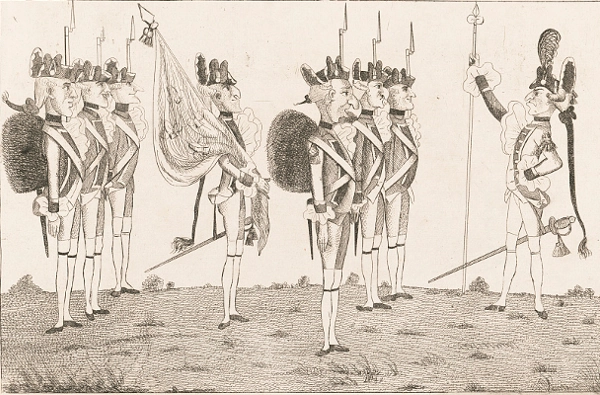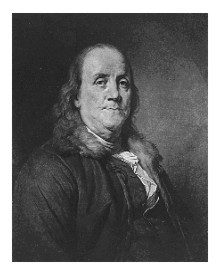
Top: George Washington. Commander of the Continental Army and 1st President of the U.S.A. Courtesy NARA. Right: Surrender at Yorktown. Courtesy Library of Congress.
Sponsor this page for $100 per year. Your banner or text ad can fill the space above.
Click here to Sponsor the page and how to reserve your ad.
-
Timeline
1780 Detail
July 11, 1780 - French troops set foot on American soil at Newport, Rhode Island, to fight alongside the Patriot militiamen of the Continental Army for American independence from Great Britain.

The citizens of Newport were surprisingly not welcoming. After the years of British occupation and war, the population had shrunk to only five thousand five hundred and forty-two residents (white, slave, and free black). Shuttered windows, no parade, or official committee greeted the operation, named Expedition Particuliere. It's supposed that the citizens were still stung by the lack of French support two years earlier when D'Estaing's fleet sailed away during the English occupation. In that Battle of Rhode Island, D'
Estaing's troops had landed, but got back on board when they saw no American troops and feared the English fleet was coming. The American troops arrived late, after the French fleet had sailed away. A Continental Army defeat was the outcome.

Rochambeau Stays
Rochambeau was not deterred by the welcome; he made camp on the night of July 11 on Bellevue Avenue, Spring Street, down to Easton's Beach and up to Castle Hill, anxious to get his ship bound troops on land after three months at sea. He paid to rent the land, not with paper money, but with gold and silver, and did the same for supplies. The residents began to warm. George Washington sent an official emissary to welcome. Within one day, the Americans were glad to have an ally in Newport. Rochambeau stayed at the Vernon House on Clarke street; he met with George Washington there on March 6, 1781.
Rochambeau would remain in Newport for one year, then march in June 1781 to meet with the Continental Army at Philipsburg, New York on July 4. The original plan was to attack the British base under General Clinton at New York City. Plans changed. With French General de Grasse sailing south into Chesapeake Bay with six thousand additional men on French warships, Washington and Rochambeau decided to march to Yorktown. They left Philipsburg on August 18, 1781, traveling three hundred miles to Williamsburg, arriving September 26, 1781. By the time they arrived, de Grasse had won the Battle of the Capes and blockaded British ships from supporting Cornwallis and his troops at Yorktown.
A statue to General Rochambeau now stands in Kings Park, Newport, Rhode Island, near Fort Adams State Park and Brenton Cove, in honor of the French alliance and assistance in the American Revolution. Its location is the point where Rochambeau first landed upon arrival in America. It was erected in 1934 and is the third replica of the Rochambeau statue by Fernand Harmar in Lafayette Park, Washington, D.C.
Photo above: Map of the Plan of Rhode Island, Position of the French Army at Newport, July 19, 1780, French Army Staff under General Rochambeau. Courtesy Library of Congress. Below: Rochambeau Reviewing the Troops, 1780, Unknown. Courtesy Library of Congress. Sources: "Today In Newport History: July 11, 1780 - "Rochambeau Arrives In Newport," July 11, 2019, Whatsupnewp.com; "The Coming of the French Fleet" by George Woodbridge in Newport History, Journal of the Newport Historical Society, vol. 53, Winter 1980; "On This Day: The Arrival of Rochambeau," Redwood Library and Atheneum; Wikipedia Commons; National Park Service; The National Washington-Rochambeau Revolutionary Route Association, Inc.; "The Historical Faces of Newport's Statues and Monuments," BBOnline.com.








